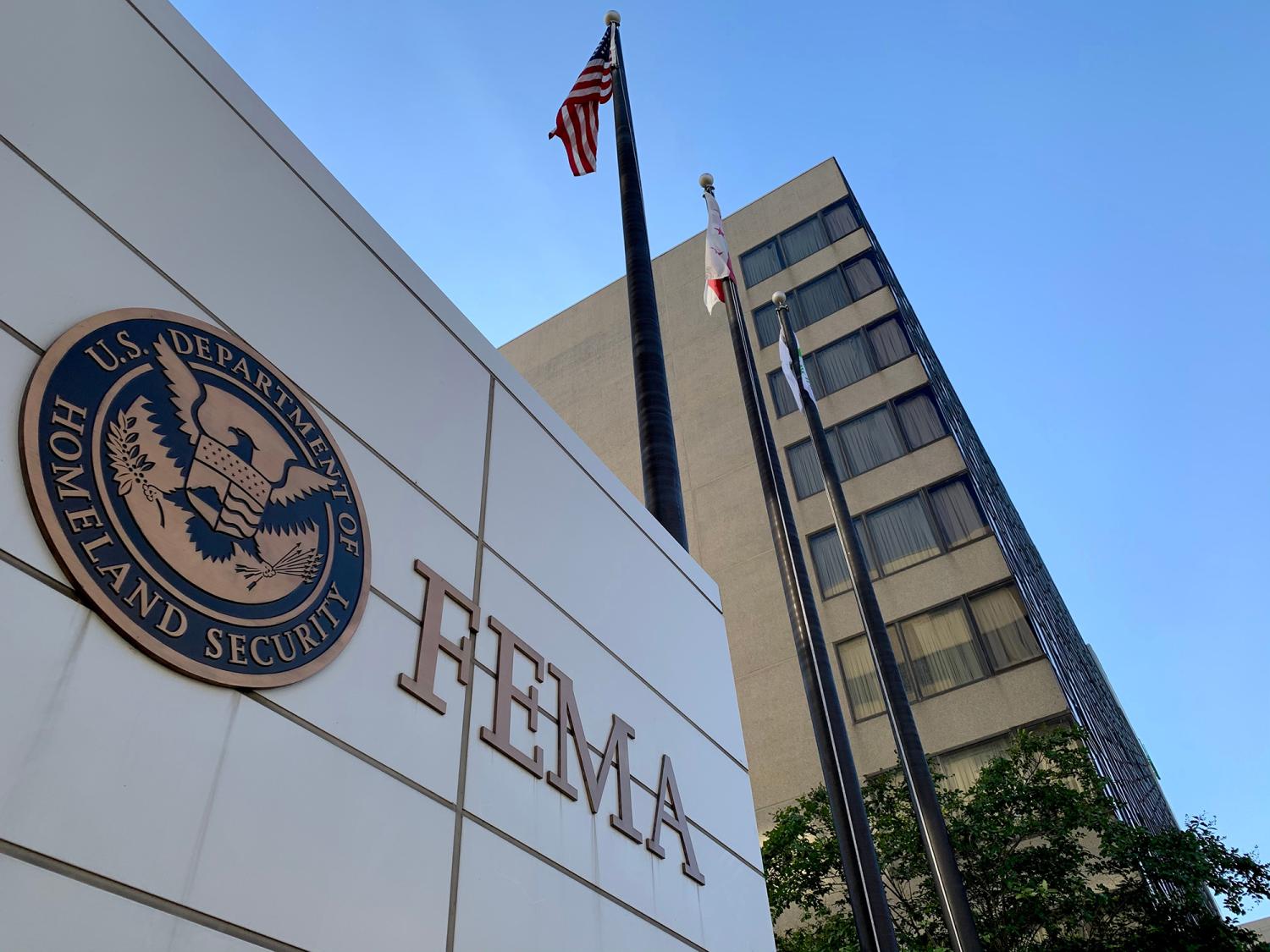
What is FEMA, and why is it so important? The Federal Emergency Management Agency, or FEMA, is a vital part of the U.S. government. Created in 1979, FEMA helps people before, during, and after disasters. Whether it's a hurricane, earthquake, or terrorist attack, FEMA steps in when local and state resources are overwhelmed. With over 22,000 employees and a budget of $29.5 billion for 2023, FEMA's reach is vast. It manages everything from flood insurance to emergency food and shelter. By coordinating with other agencies and local governments, FEMA ensures that the nation is prepared for any emergency.
Key Takeaways:
- FEMA, established in 1979, helps people before, during, and after disasters. It operates under the Department of Homeland Security and has a budget of $29.5 billion for FY 2023.
- FEMA responds to natural and man-made disasters, manages the National Flood Insurance Program, and collaborates with various entities to ensure effective disaster management and response.
Understanding FEMA's Mission and Creation
The Federal Emergency Management Agency (FEMA) plays a vital role in disaster response and recovery in the United States. Let's dive into some key facts about its mission and creation.
- Mission: FEMA's main goal is to help people before, during, and after disasters, ensuring the nation is ready to handle emergencies.
- Creation: President Jimmy Carter established FEMA on April 1, 1979, through an executive order.
- Jurisdiction: FEMA operates under the United States Department of Homeland Security (DHS), which was formed in 2003.
- Headquarters: The agency's headquarters is located in Washington, D.C., with ten regional offices across the country.
- Employees: As of September 2023, FEMA employs over 22,000 people nationwide, with the workforce expanding to more than 50,000 during major disasters.
- Annual Budget: For FY 2023, FEMA's budget is $29.5 billion, supporting various emergency management activities.
- Motto: "Helping people before, during and after disasters" is FEMA's motto, reflecting its core values and mission.
Historical Background and Early Legislation
FEMA's roots go back much further than its official creation in 1979. Here are some historical milestones and early legislative actions that shaped the agency.
- History: Federal emergency management dates back to 1803 when Congress passed legislation to aid Portsmouth merchants after a series of fires.
- Early Legislation: The Congressional Act of 1803 was the first national disaster legislation, setting a precedent for federal disaster relief.
- Ad Hoc Approach: Until the mid-20th century, Congress passed ad hoc legislation to address various disasters, such as the great fires of New York City in 1835 and Chicago in 1871.
- Federal Disaster Assistance Administration: In the 1930s, disaster relief became part of broader legislation aimed at rebuilding the U.S. economy.
- Wartime Civil Defense: The 1950s saw emergency management dominated by civil defense activities, preparing for potential nuclear attacks.
Major Disasters and FEMA's Formation
Significant disasters in the 1960s and 1970s led to the formation of FEMA. Here are some key events and legislative actions from that period.
- Major Disasters: Hurricanes and earthquakes in the 1960s and early 1970s, like Hurricane Carla (1962) and the Alaskan Earthquake (1964), highlighted the need for a coordinated disaster response.
- Disaster Relief Act: Enacted in 1974, this act established a process for presidential declarations of national disasters.
- FEMA's Formation: In response to the Three Mile Island nuclear accident and other disasters, President Carter signed an executive order to create FEMA in 1979.
- Absorption of Agencies: FEMA absorbed various disaster-related agencies, including the Federal Insurance Administration and the National Fire Prevention and Control Administration.
- Civil Defense Responsibilities: The agency took over civil defense duties from the Department of Defense's Defense Civil Preparedness Agency.
FEMA's Early Leadership and Systems
FEMA's initial leadership and systems laid the groundwork for its current operations. Here are some key facts about its early years.
- First Director: John Macy, former Director of the Civil Service Commission, was appointed as FEMA's first Director.
- Integrated Emergency Management System: Under Macy's leadership, FEMA developed the Integrated Emergency Management System (IEMS), an all-hazards approach to emergency preparedness and response.
- Dual-Use Approach: The IEMS combined natural hazards preparedness with civil defense activities, emphasizing a dual-use approach.
- Earthquake Preparedness: FEMA was tasked with earthquake preparedness and mitigation under the Earthquake Hazards Reduction Act of 1977.
- Emergency Food and Shelter: The agency also managed emergency food and shelter under the Stewart B. McKinney Homeless Assistance Act of 1987.
Legislative Milestones and Reforms
Several legislative acts and reforms have shaped FEMA's operations over the years. Here are some key milestones.
- Disaster Assistance: FEMA managed disaster assistance under the Robert T. Stafford Disaster Relief and Emergency Assistance Act of 1988.
- Dam Safety: The agency oversaw dam safety under the National Dam Safety Program Act of 1996.
- Reforms Under James Lee Witt: In 1993, President Bill Clinton appointed James Lee Witt as FEMA Director, who initiated reforms to streamline disaster recovery and mitigation processes.
- Cabinet Rank: In 1996, FEMA was elevated to cabinet rank, although this status was not continued by President George W. Bush.
- Post-Cold War Shift: The end of the Cold War allowed FEMA to shift its resources from civil defense to natural disaster preparedness.
FEMA's Role in Homeland Security
Following the September 11 attacks, FEMA's role expanded to include homeland security responsibilities. Here are some key facts about this transition.
- Homeland Security Act: The Homeland Security Act of 2002 created the Department of Homeland Security (DHS), which absorbed FEMA on March 1, 2003.
- Emergency Preparedness and Response Directorate: As part of DHS, FEMA became the Emergency Preparedness and Response Directorate, employing more than 2,600 full-time employees.
- National Flood Insurance Program: FEMA manages the National Flood Insurance Program (NFIP), providing flood insurance to property owners across the United States.
- Regional Offices: FEMA has ten regional offices located throughout the country, each responsible for coordinating disaster responses in specific regions.
- Disaster Declarations: The governor of the state where a disaster occurs must declare a state of emergency and formally request federal assistance from FEMA and the President.
FEMA's Funding and Strategic Planning
FEMA's funding and strategic planning are crucial for its operations. Here are some key facts about these aspects.
- President's Disaster Relief Fund: FEMA manages the President's Disaster Relief Fund, which is the source of most federal funding assistance after major disasters.
- Program and Budget Oversight: FEMA's operating budget is overseen by 24 Congressional committees and subcommittees, ensuring accountability and transparency.
- Strategic Plan: The 2022-2026 Strategic Plan outlines three bold goals: instilling equity as a foundation, leading whole-of-community climate resilience, and promoting a ready FEMA and prepared nation.
- Core Values: FEMA's core values are guided by its capstone doctrine, "We Are FEMA," which provides direction on how the agency conducts itself daily.
- Publications and Resources: FEMA publishes various newsletters and bulletins that provide information on emergency management activities, program updates, and policy announcements.
Training, Education, and Public Awareness
FEMA places a strong emphasis on training, education, and public awareness. Here are some key initiatives in these areas.
- Training and Education: The Emergency Management Institute (EMI) in Emmitsburg, Maryland, offers centralized professional courses for the nation's emergency managers.
- Off-Site Planning: FEMA engages in off-site planning for emergencies at commercial nuclear power plants and the Army's chemical stockpile sites.
- Emergency Food and Shelter Funding: The agency provides emergency food and shelter funding for the homeless, supporting community-based programs during crises.
- Continuity of Government: FEMA ensures the continuity of the federal government during national security emergencies, maintaining essential functions and services.
- Terrorist Incident Response: The agency is responsible for the federal response to the consequences of major terrorist incidents, coordinating efforts to mitigate damage and support recovery.
Significant Disaster Responses
FEMA has responded to numerous significant disasters over the years. Here are some notable examples.
- Historical Milestones: FEMA has responded to significant disasters like the contamination of Love Canal in upstate New York and the Three Mile Island nuclear accident.
- Natural Disaster Response: The agency has led responses to major natural disasters such as Hurricane Andrew in 1992 and the Loma Prieta Earthquake in 1989.
- Man-Made Disaster Response: FEMA has also responded to man-made disasters like the Cuban refugee crisis in 1980 and the contamination of Love Canal.
Organizational Structure and Collaboration
FEMA's organizational structure and collaboration with other entities are key to its effectiveness. Here are some details.
- Organizational Structure: FEMA is comprised of program offices and regional offices, each playing a critical role in coordinating disaster responses and recovery efforts.
- State, Regional, Tribal, and Territorial Coordination: The agency works closely with state, regional, tribal, and territorial authorities to ensure effective disaster management and response.
- Public Awareness and Education: FEMA engages in public awareness and education campaigns to inform citizens about emergency preparedness and response measures.
- Collaboration with Other Agencies: The agency collaborates with other federal agencies, state and local governments, non-governmental organizations, and the private sector to enhance emergency management capabilities.
- Continuous Improvement: FEMA continuously evaluates its operations and implements improvements based on lessons learned from past disasters, ensuring that the nation remains prepared for future emergencies.
FEMA's Vital Role in Disaster Management
FEMA plays a crucial role in keeping Americans safe during disasters. Since its creation in 1979, the agency has evolved to handle both natural and man-made emergencies. With a workforce that can swell to over 50,000 during major crises, FEMA ensures rapid and effective responses. Its budget of $29.5 billion for FY 2023 supports a wide range of activities, from disaster relief to public education.
The agency's history is rich, dating back to early federal relief efforts in 1803. Over the years, FEMA has absorbed various agencies, streamlined processes, and adapted to new challenges. It manages programs like the National Flood Insurance Program and provides emergency food and shelter.
FEMA's commitment to continuous improvement and collaboration with other agencies ensures that the nation remains prepared for future emergencies. Their mission to help people before, during, and after disasters remains unwavering.
Frequently Asked Questions
Was this page helpful?
Our commitment to delivering trustworthy and engaging content is at the heart of what we do. Each fact on our site is contributed by real users like you, bringing a wealth of diverse insights and information. To ensure the highest standards of accuracy and reliability, our dedicated editors meticulously review each submission. This process guarantees that the facts we share are not only fascinating but also credible. Trust in our commitment to quality and authenticity as you explore and learn with us.


